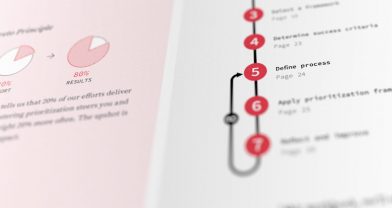When things are changing fast, shortcuts and simple answers to complex problems can feel like lifelines—tempting and hard to resist. But shortcuts can also be dangerous distractions from what really matters. What are the specific shortcuts that modern marketers need to watch out for? And where should we focus our energies instead? Let’s take a moment to pause and reflect.
- First off, let’s cut ourselves a bit of slack. We’re only human, after all, and as Tony Schwatz observes, “simple answers make us feel safer, especially in disruptive and tumultuous times.” His remedy—resist simplicity and train yourself to tackle complexity head on.
- What simple answers do marketers need to guard against? Last time out, we highlighted the common pitfall of over-investing in new marketing technology without the internal capabilities to back it up.
- Another simple idea with strong appeal: agile marketing. We’re big believers in agile done right, but pursuing this path with a shortcut mentality carries real risks. Mark Ritson sums it up this way: “Whenever I hear a client cry out for greater agility I wince, because invariably they are intent on jettisoning even their vaguest strategic principles for a roll-with-the-punches approach to planning.”
- Marketing department re-orgs seems to be gaining momentum as leaders grapple with change and complexity. Again—done right a re-vamped org design can be very powerful. But it’s important to realize that a re-org alone can’t fix a failing strategy.
- Of course, no discussion of short cuts would be complete without mentioning the idea of “best practices”. They’re not a bad starting point when conditions are stable, but these days they often fall short.
- None of these things are inherently wrong or bad. Your brand’s best path forward may actually involve a combination of new technology, agile processes, a departmental re-org and the adoption of a few carefully chosen best practices. But the only way to know for sure is to push through the urge to reach for simple answers and do the hard work of defining a strong, clear strategy. From there, the right (shortcut-free) path will become clear.
- Make no mistake—this path isn’t easy. That’s what makes shortcuts so attractive. But the results make the journey worthwhile: “Strategy is the art of sacrifice, it means putting your expenditure against the point at which it can make the biggest impact.”

